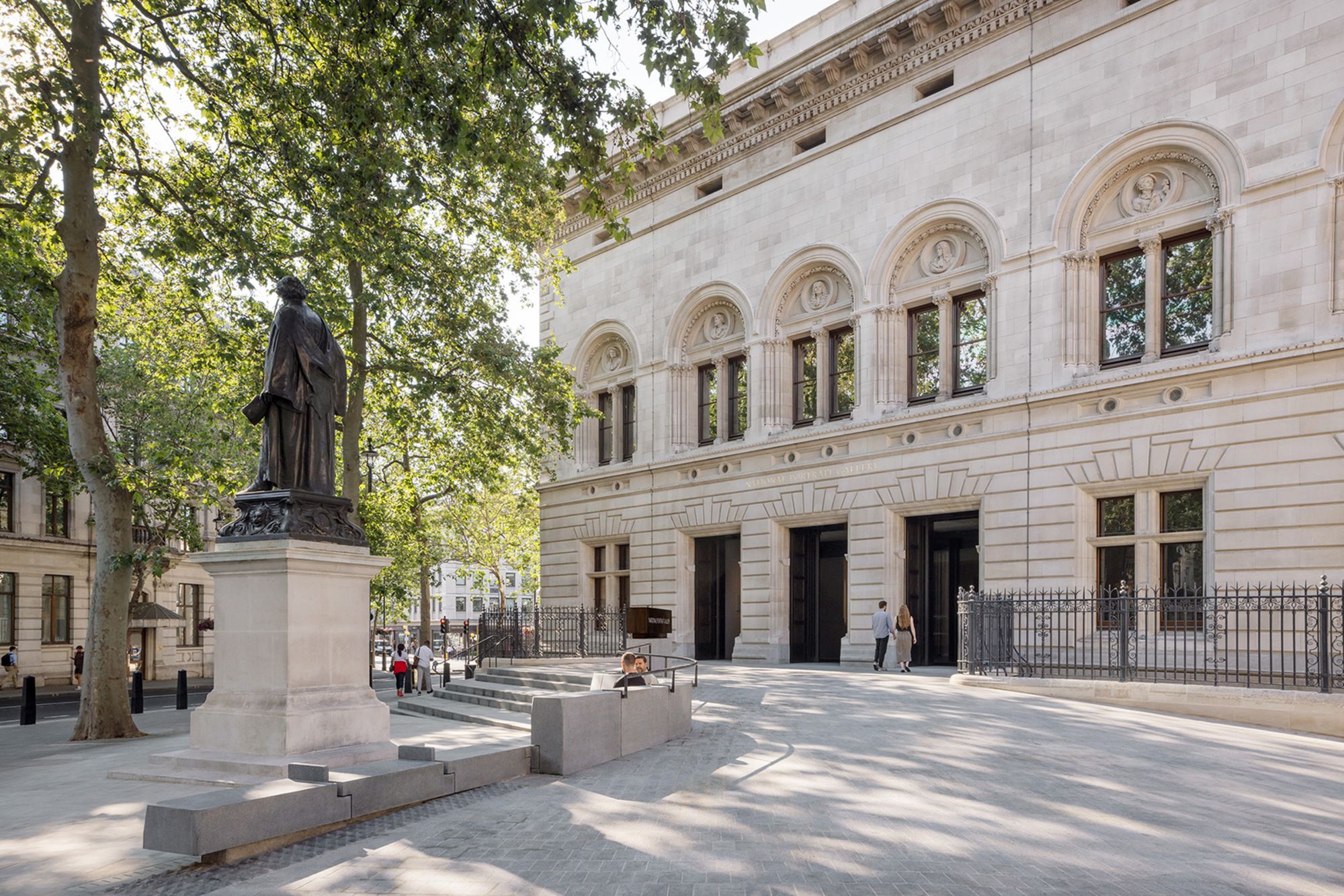When The National Portrait Gallery opened its doors to the public in London on Thursday, it was the first time in three years it has done so.
Officially re-opened by its patron, Princess Catherine of Wales, on Tuesday, the flagship gallery — which claims to house “the world’s greatest collection of portraits, spanning six centuries,” had been closed to allow for the “most extensive transformation of its building since 1896” — when it originally opened.
The gallery’s £41 million ($52 million) revamp included architectural changes by Jamie Fobert Architects and Purcell, such as a more accessible main entrance and increased natural light in many of the gallery spaces. There has been a chronological re-ordering of its collection to take visitors “on a journey through history, from the Middle Ages to the present day, telling the history of the United Kingdom through portraits,” the gallery said in a press release.
The rehang was also about bringing the collection up to speed with modern Britain. The gallery said audience feedback had requested it better “present an inclusive and dynamic picture of the people who have contributed to the rich history of the United Kingdom.”
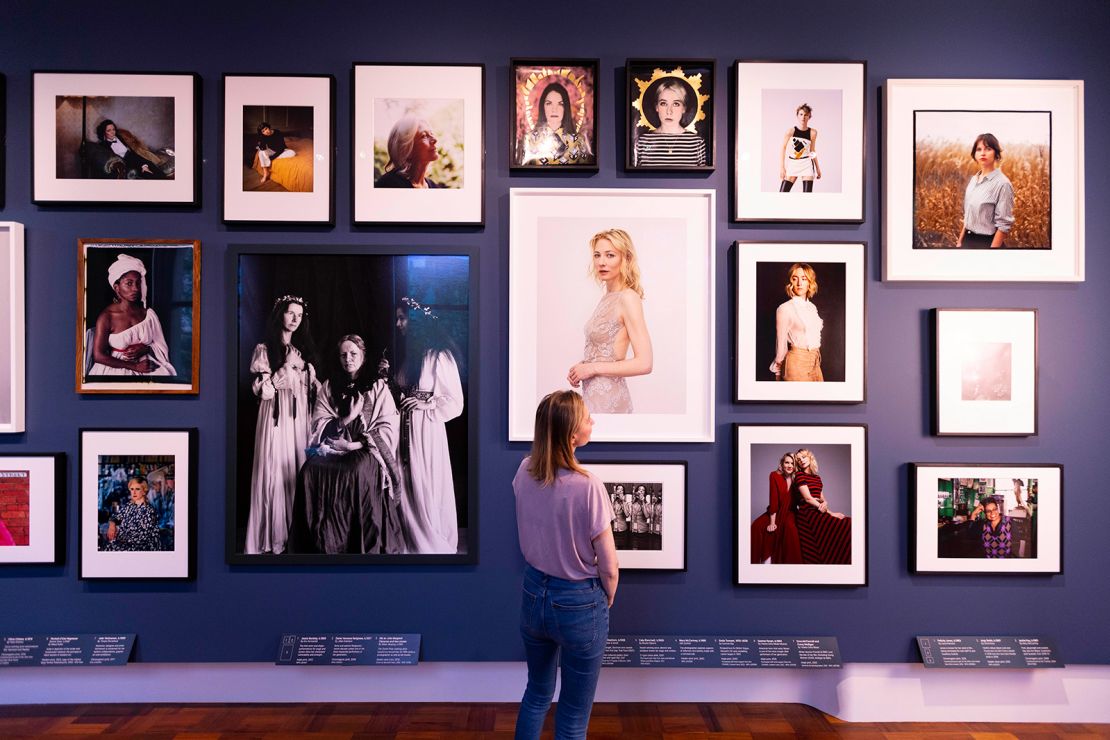
Its press statement accompanying the reopening says 48% of the portraits in the 20th- and 21st-century galleries are now of women, up from 35%. And 11% of all portraits on display today are of people from ethnic minority communities, up from 3%.
As part of this push, the gallery points to its work acquiring, commissioning and borrowing art to present a wider range of people and stories. The artist Tracey Emin was commissioned to rethink the building’s new front doors, incorporating 45 low-relief bronze panels representing “every woman, throughout time,” according to the gallery.
It also draws attention to works such as British film director Sam Taylor Johnson’s film of David Beckham sleeping, and portraits of British author Zadie Smith by Nigerian American artist Toyin Ojih Odutola, Glastonbury founder Sir Michael Eavis by British pop artist Peter Blake, and 19th-century mathematician and computer pioneer Ada Lovelace by 19th-century British painter Margaret Sarah Carpenter.
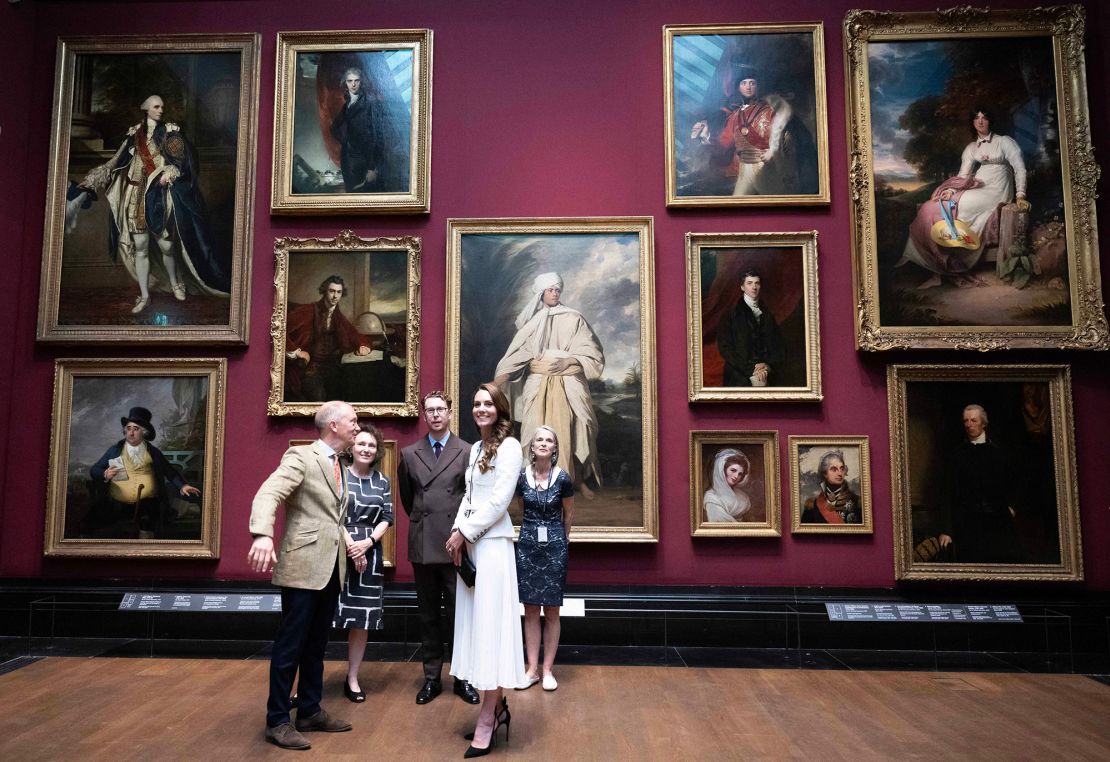
Collage of notable women gets starring role
Mother and daughter artists Jann Haworth and Liberty Blake were also commissioned by the gallery, in conjunction with the Chanel Culture Fund, to create a 28-foot-long mural called “Work In Progress.” Running across seven boards, it features 130 women who have influenced British history and culture, from the first century to the modern day including the ancient Celtic queen Boudicca and Tudor-era queen Elizabeth I, academic Mary Beard, writers Beatrix Potter and Agatha Christie and former Olympic boxer Nicola Adams. Installed adjacent to the gallery’s new ticket hall, Work In Progress has stylistic parallels with The Beatles’ Sgt Pepper’s “Lonely Hearts Club Band” album cover, which Haworth co-created in 1967.
“It is like a dream drinks reception,” Blake explained. “I often imagine these people in a room together at the same time, their relationships, the conversations they would have had.”
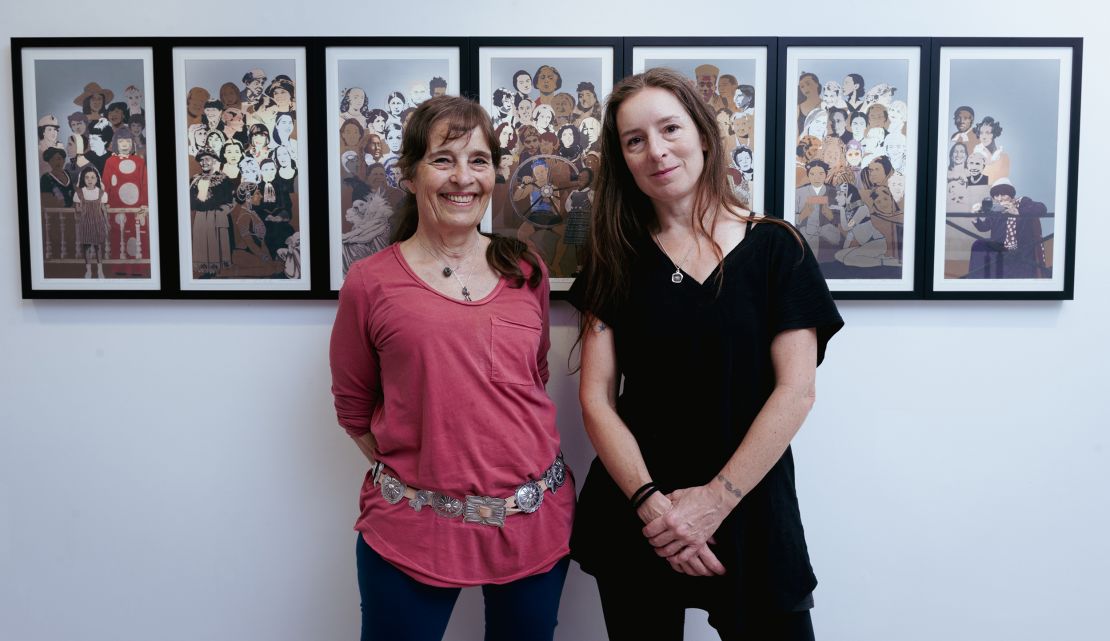
Work on the piece began during the Covid-19 pandemic, through a series of workshops guided by Haworth and Blake in collaboration with colleges and community groups across the UK alongside 14 professional artists. Participants produced stenciled portraits of a woman of their choice with acrylic paints and paper which were then painstakingly collaged, arranged and re-arranged by Blake to form a single image across seven boards.
“Stencil is a great process for amateurs to work in because it has boundaries,” Blake said. “It’s not like giving someone a pencil and a piece of paper and saying ‘off you go.’ It’s contained, but in that there’s an incredible amount of freedom.”

“We are still kind-of mystified as to how the commission came about,” the pair, who are based in Salt Lake City, told CNN on the day of the museum’s re-opening. “Happy, but mystified. Why would the National Portrait Gallery commit to taking this work they wouldn’t see until it’s finished, 90% of which is created by non-artists? It’s a street-art based idea and stencilling is humble, it’s not flashy. We still can’t really believe it.”
An anonymous outline is also included on the seventh panel, for viewers to contemplate adding their own choice to the mural. “The mural could be said to be a question, or perhaps a series of questions. Who is that woman? What did she do?” Haworth told the National Portrait Gallery about the figure. “How can you celebrate the accomplishments made by women when you know that the more you look, the more you discover and that you will have to answer this question: ‘Why isn’t X on this mural?’ That is what the ‘Work In Progress’ mural asks and why there is a blank silhouette for the viewer to add their own choice.”
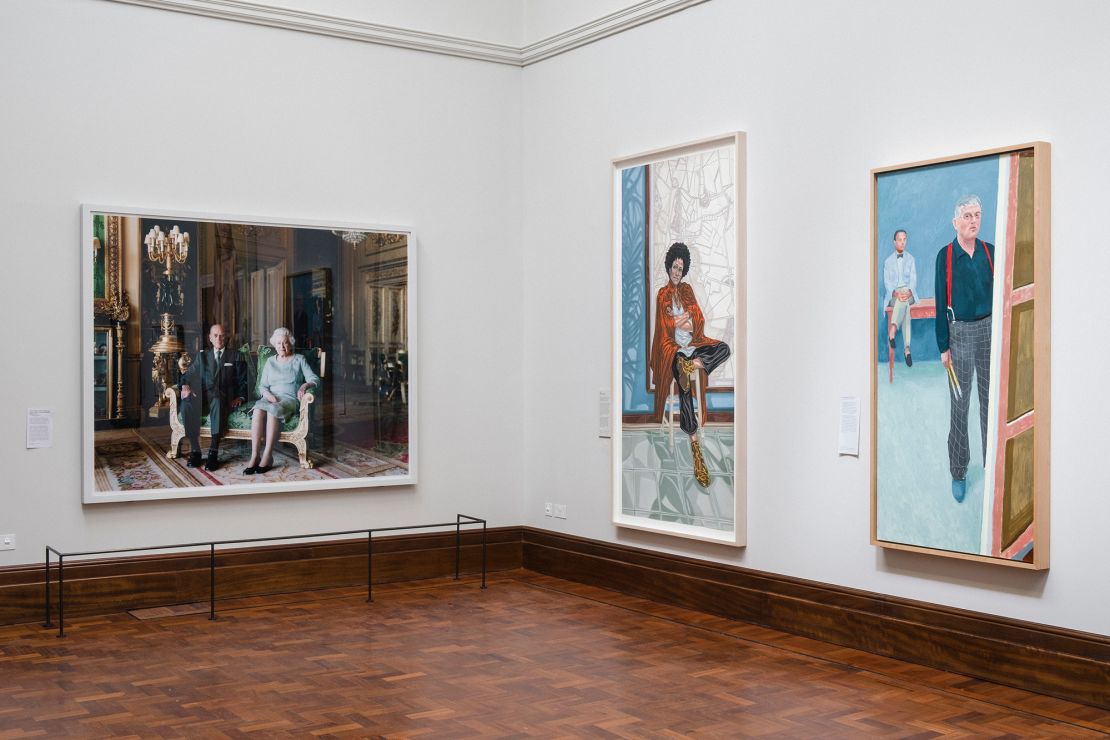
A gallery of people, for people
While public and most press reactions to the gallery’s modernization efforts have been overwhelmingly positive, not everyone agrees. Some art critics have been scathing of the gallery’s rework, with Jonathan Jones at the Guardian dubbing it “the same old cocktail party.” His review begins: “The National Portrait Gallery has been closed for three years. I wish I could say that I have missed it.”
In a statement released for the opening, gallery director Nicholas Cullinan said, “Many significant new acquisitions and commissions over the last few years have transformed both the range and the quality of the portraits we have on our walls,” adding that the “transformation” will enable the space to “truly become a gallery of people, for people and more alive and lively than ever before.”
“Each step that a gallery takes towards being in its time is a good thing,” Haworth said. “There are always going to be the old guard who like the fustiness of it and the young generation who couldn’t be less interested in that. You’ll never accommodate both of those things but the rehang is great, and it is sensitively done by people who love the work and are versed in art history.”
“If they take a step that is risky — like this mural — there are going to be people who perhaps don’t approve,” she continued. “But in 50 years when they rehang this, there will probably be people who are furious about that too.”
